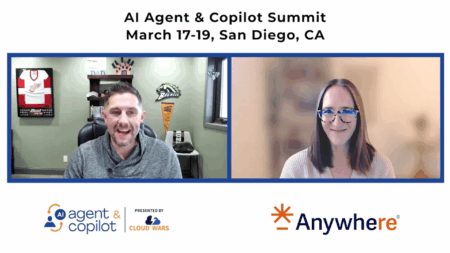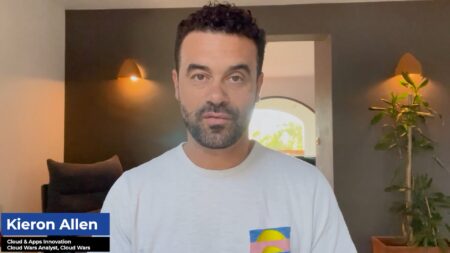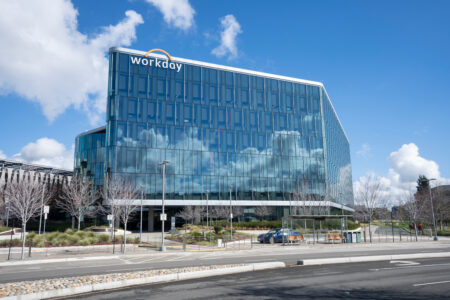
Bob Evans interviews Doug Smith, SVP, Oracle, as part of the Partners Ecosystem Innovation series, in which he speaks with top executives responsible for the ecosystem businesses of the Cloud Wars Top 10 companies. This exclusive series leads up to the Partners Ecosystem Digital Summit, taking place on April 20, 2023. Click here to register for the event. The discussion covers Oracle’s new partners, co-creation, and why the dynamic shift in partners has led the company to develop a new definition of customer success.
Register here for your on-demand pass to view all content from Partners Ecosystem Digital Summit. The digital event, which took place on April 20, focused on analyzing the business and IT imperatives around cloud, AI, automation, data modernization, and cybersecurity that define the future of partnerships.
Highlights
00:46 — After introducing Doug Smith, Bob notes all that is going on with Oracle. In addition to its growing cloud infrastructure business and focus on industry-specific products, the company is leading the trend on the increased and enhanced role that partners play in the overall ecosystem. He asks Smith about the biggest change to occur for Oracle in the last year relating to the company’s approach to its partners ecosystem.
01:23 — Smith explains that a key focus of Oracle and its partners ecosystem is leaning towards a much more “solutions-oriented focus with customers.” Customers aren’t looking to buy products; they are looking to buy solutions that solve critical business issues. This works well with Oracle’s technology stack, explains Smith, since Oracle’s tech stack includes many foundational elements for solutions. He offers an example of the work that Oracle is doing with two major partners — FedEx and JPMorgan. Oracle is working with FedEx to build integrated logistics services, and with JPMorgan to deliver integrated banking services.
02:44 — So often, Oracle software is delivered through its solutions/services partners, explains Smith. Many customers contact the company wanting to bring about “digital transformation” — that includes Oracle technologies, products, and services. “It’s a very holistic experience, but extends beyond the technology,” suggests Smith. The biggest change in the last year, Smith explains, “is getting more steam and energy behind how do we [Oracle] go co-create solutions with our partners ecosystem.”
04:18 — Customers becoming partners, too? “That’s a pretty big wrinkle,” says Bob. Smith agrees, “It really fits in the strategy for so many of these enterprises, the direction they’re going. And they recognize, and they need, a technology partner like Oracle to help them accomplish those goals.”
05:47 — Bob asks Smith to describe the shifting profile of the partners that Oracle works with. Oracle is working to build a deep ecosystem and grow, which includes three key aspects:
- Growing the ecosystem
- Applying a”solutions-oriented focus”
- Enabling partners and customers to procure and consume the technology in a way that meets demand
Historically, customers have wanted to work with partners in a “managed services” way. Now, that is shifting towards cloud services, which simplifies a lot of things. “But, how do we co-sell with partners? That’s where I see the biggest amount of growth,” explains Smith. Rather than Oracle relying on the partner to “front the deal with the customer,” partners are now working “hand in hand with Oracle.” Smith notes that “we’re showing up together with a customer, engaging, demoing our services together, showing how we meet their needs.”
08:30 — With the co-creation of solutions and co-selling, there must be new intellectual property (IP) coming from Oracle’s partners ecosystem. Bob asks Smith to describe the new types that he is seeing come out of the ecosystem.
09:08 — Oracle has deep roots in analytics, tools, and databases. The new sales motion around generative AI has opened up IP possibilities significantly, explains Smith. Many partners are interested to see what Oracle can do with these capabilities. The other piece goes back to industry-specific solutions. Oracle’s acquisition of Cerner has prompted the company to rally alongside its partners ecosystem to deliver end-to-end solutions for customers.
10:47 — How is Oracle working to deliver sophisticated, sometimes new, sometimes co-created solutions, to partners in a way that creates a positive experience? Ensuring that everything — from the sales process and onward — is done in a seamless way, says Smith. It comes down to relationships and trust. “It’s not just about getting a partnership in place,” but creating seamless interactions for customers that are aligned with specific partners. Customer success — and mitigating any pain points — is a critical focus of Oracle.
14:40 — How does Oracle ensure that the customer gets what the customer needs, without making this overly complicated, and still giving them the best of what Oracle and its partners have to offer?
15:02 — Oracle has utilized its customer success management functions for a while to gauge the success rate of various projects. In the last few years, Oracle has extended this functionality to look for learnings across a set of engagements that a given partner has across its client base. The company also provides both customers and partners, that can proactively problem solve.
16:58 — “In some ways, what you just said there is a reflection of what happened across the entire company,” Bob tells Smith. Oracle had to adapt its culture to the “cloud world, where customer expectations are different.” Fundamentally, this is why Smith joined Oracle, he says.









